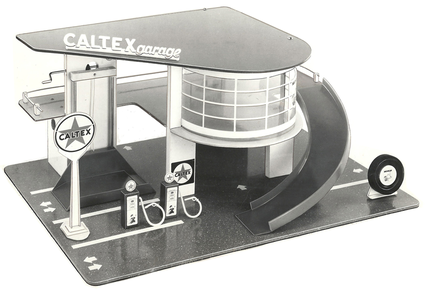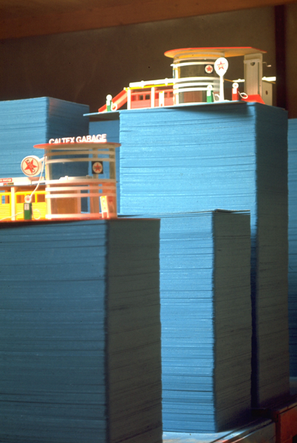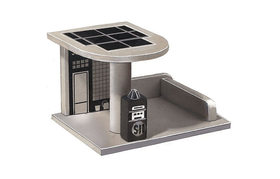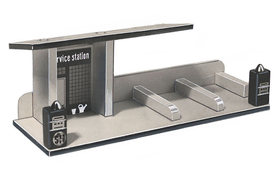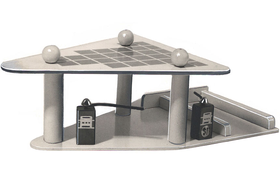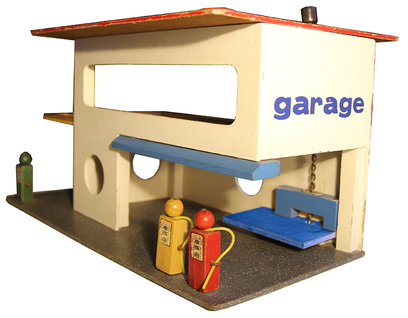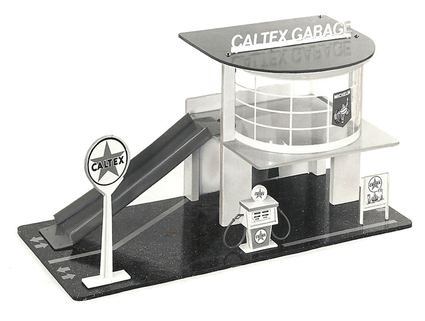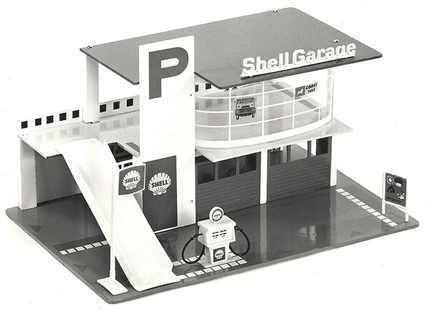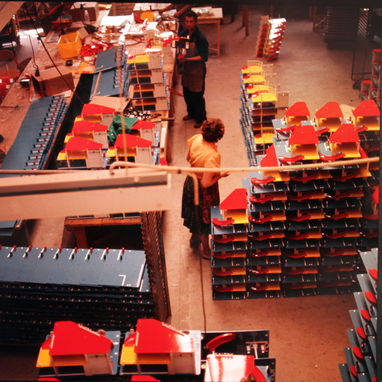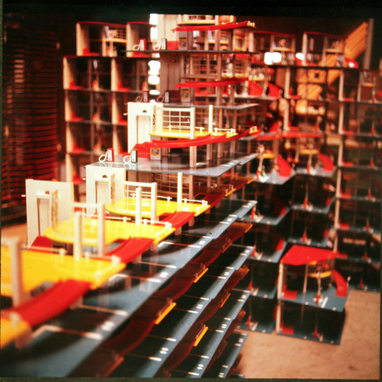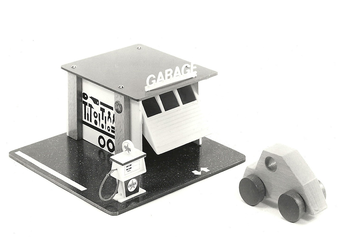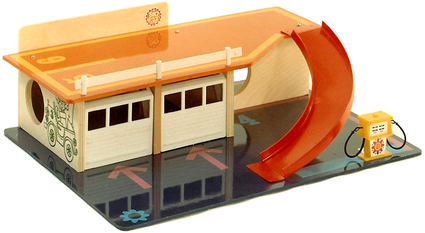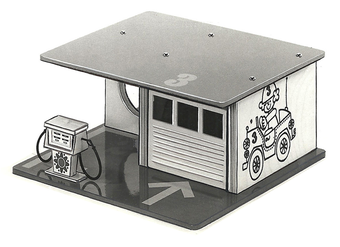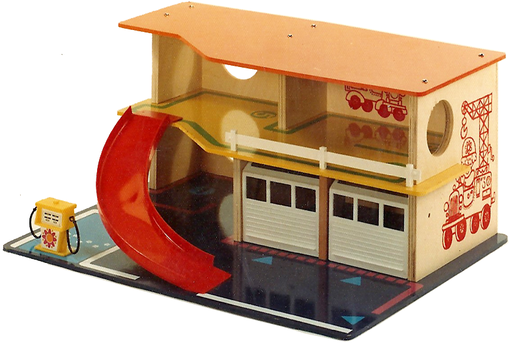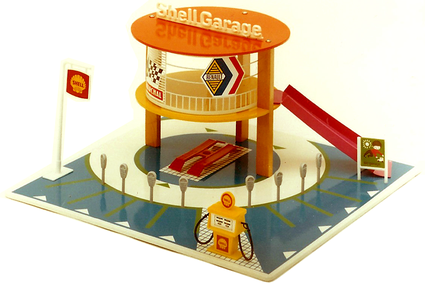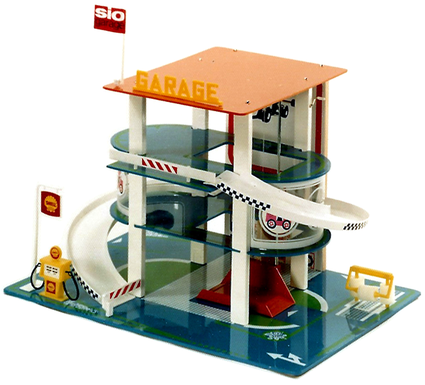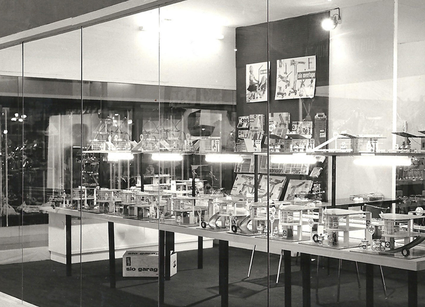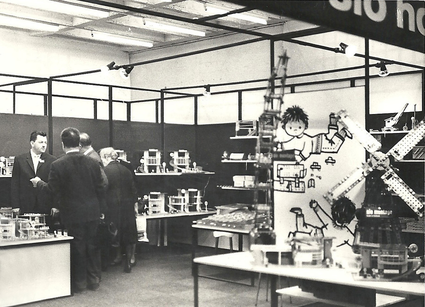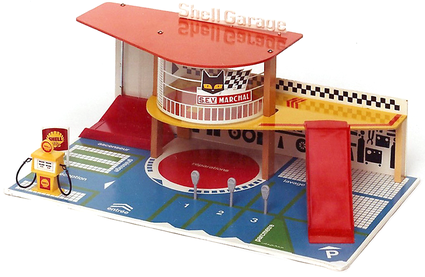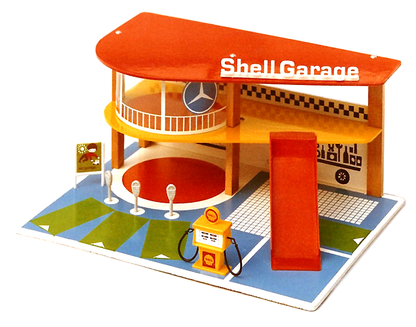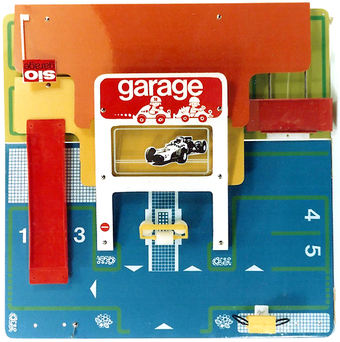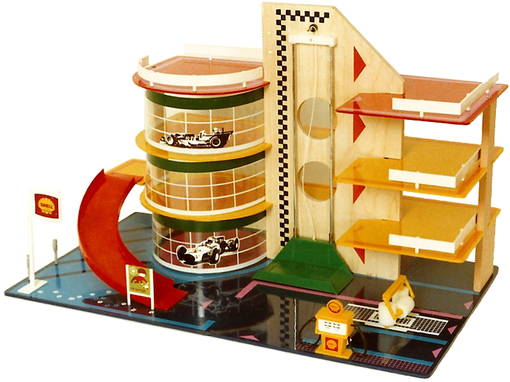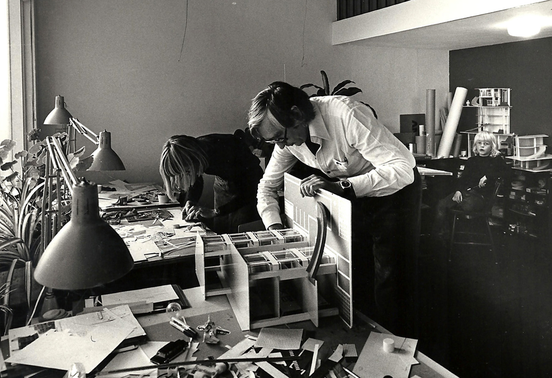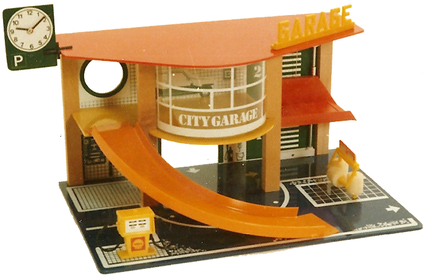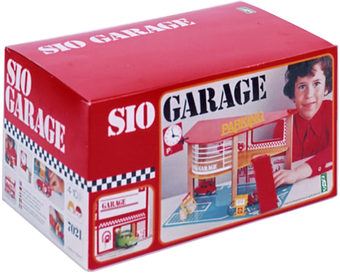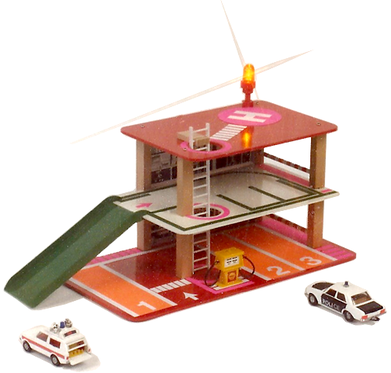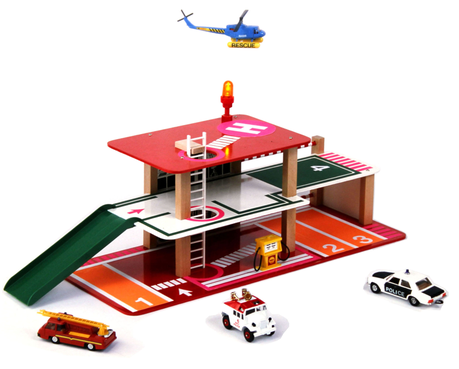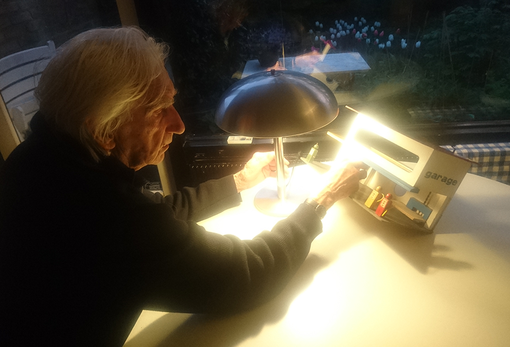Garages, industrial modular prefab
With the rise of toy cars like Corgi Toys and Dinky Toys a market emerges for toy garages. In the late 40's and early 50's Sio produces a number of garages which are made of wood and plywood with plastic windows and doors. The elements are painted and sometimes silkscreened.
Rokus van Blokland developes a modular system of poles, floor plates and added elements such as elevator, driveway, windows and petrol stations. Floor plates have notches that slide into each other and thus locking other parts during the assembly which needs only a few nails.
New series of garages are designed by varying within the system.
The shapes and sizes of the base plates, intermediate floors and roofs have been designed in such a way that they fit into each other in an efficient manner where there is minimal loss of material at the cut-out in the factory.
Thanks to the far-reaching standardization of building elements and the simplification of the manufacturing process, the costs could be greatly reduced.
The garages have always been an important part of the Sio collection. At the annual Toy Fair in Nuremberg in february, the new models are presented which will be around Santa Claus and Christmas in the shop.
This page shows a selection of the around 300 designs.
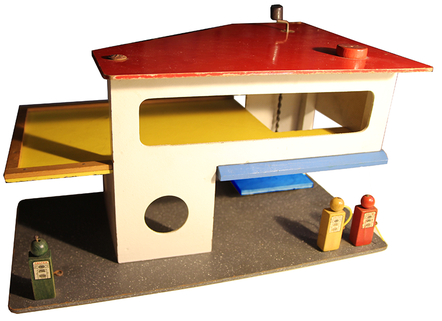
Garage with elevator and lettering garage. Basic sizes grid of 10 x 10 cm.
The vertical white surfaces at the front and back have the same size. The cut out rectangles are used at the left side and at the right with 'garage'.
Size Ground; 20 x 40 cm, yellow floor 20 x 40 cm, red roof 30 x 30 cm.

